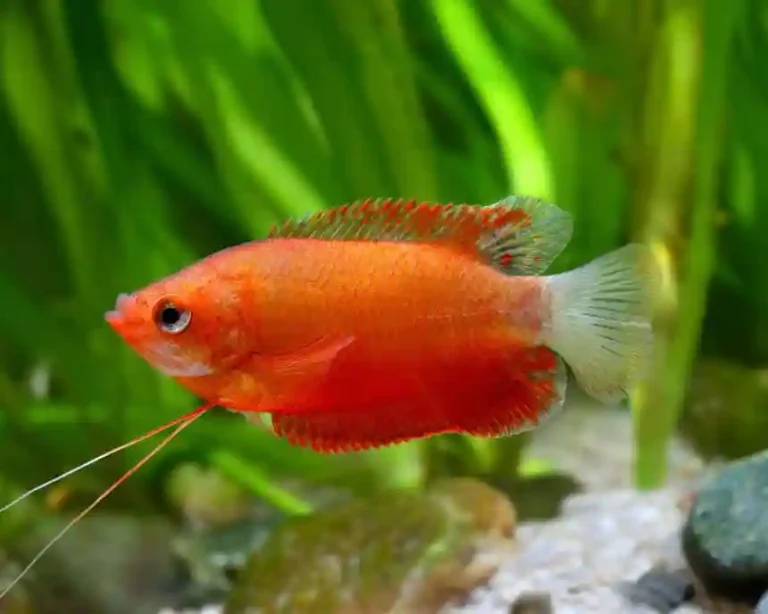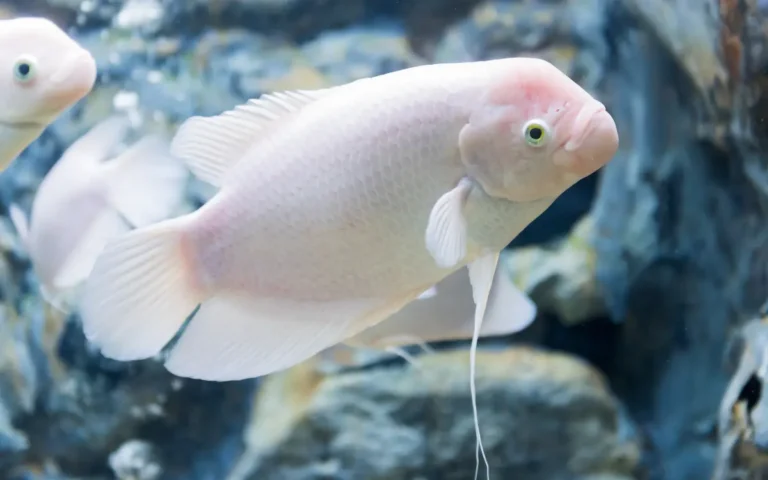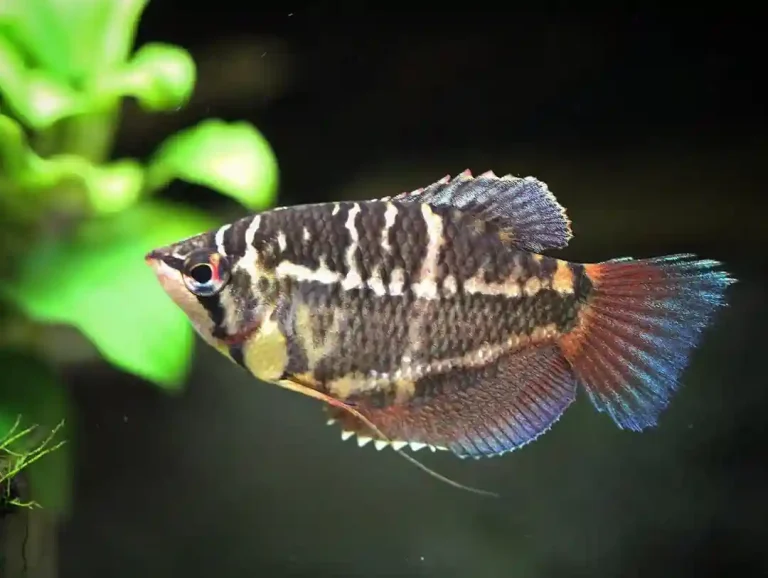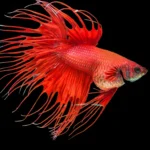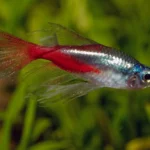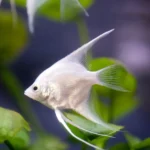Dwarf Gouramis (Trichogaster lalius) are peaceful, colorful freshwater fish that bring personality and beauty to community tanks. Their shimmering hues and curious behavior make them a favorite for both beginner and experienced aquarists. This guide covers everything you need to know about their care, from tank setup to breeding.
Dwarf Gourami Species Profile

| Characteristic | Details |
| Scientific Name | Trichogaster lalius |
| Origin | India, Bangladesh, and Pakistan |
| Adult Size | 2–3 inches |
| Lifespan | 4–6 years |
| Temperament | Peaceful, sometimes territorial |
| Ideal Tank Size | Minimum 10 gallons (20+ ideal) |
| Water Temperature | 76–82°F |
| pH Range | 6.0–7.5 |
| Water Hardness | 4–10 dGH |
| Diet | Omnivore |
Species Overview
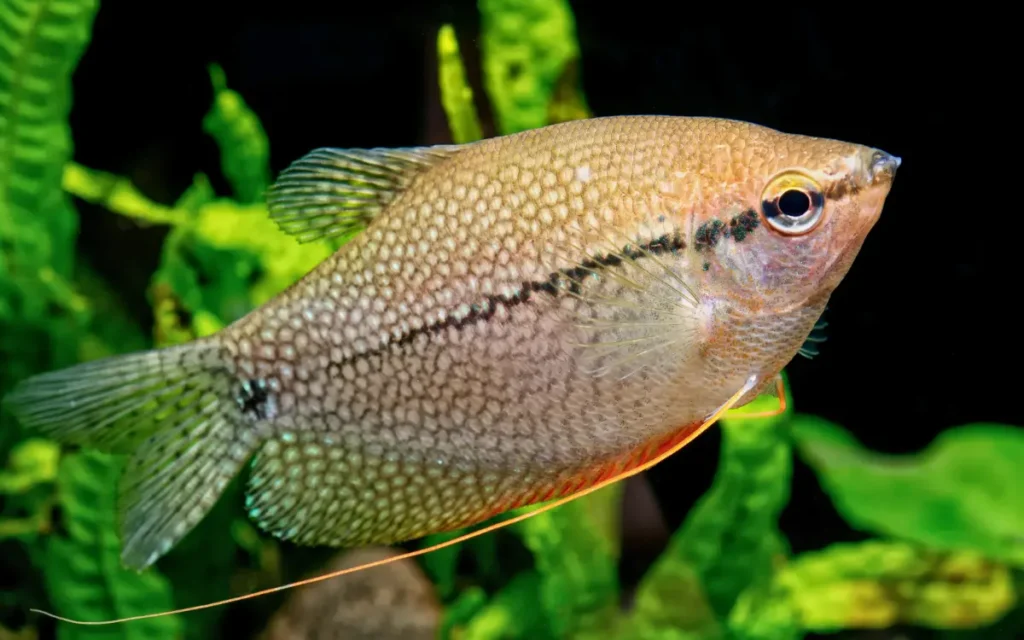
Dwarf Gouramis are small labyrinth fish native to slow-moving rivers and rice paddies in South Asia. Their ability to breathe surface air makes them highly adaptable. Males are brightly colored with blue, red, or neon patterns, while females are more silver-gray. With proper care, they live 4–6 years and can be a great centerpiece fish in nano and community setups.
Appearance and Behavior
Males are known for their striking color and long flowing fins, especially the red flame and neon blue varieties. Dwarf Gouramis are peaceful but may show mild territorial behavior, especially males. They are intelligent and observant, often watching you move around the room or recognizing feeding times.
My Experience: I’ve kept multiple Dwarf Gouramis over the years, and each had its own unique personality. Some were shy, others outgoing—but all were peaceful when given their own space and calm tank mates.
Ideal Tank Setup
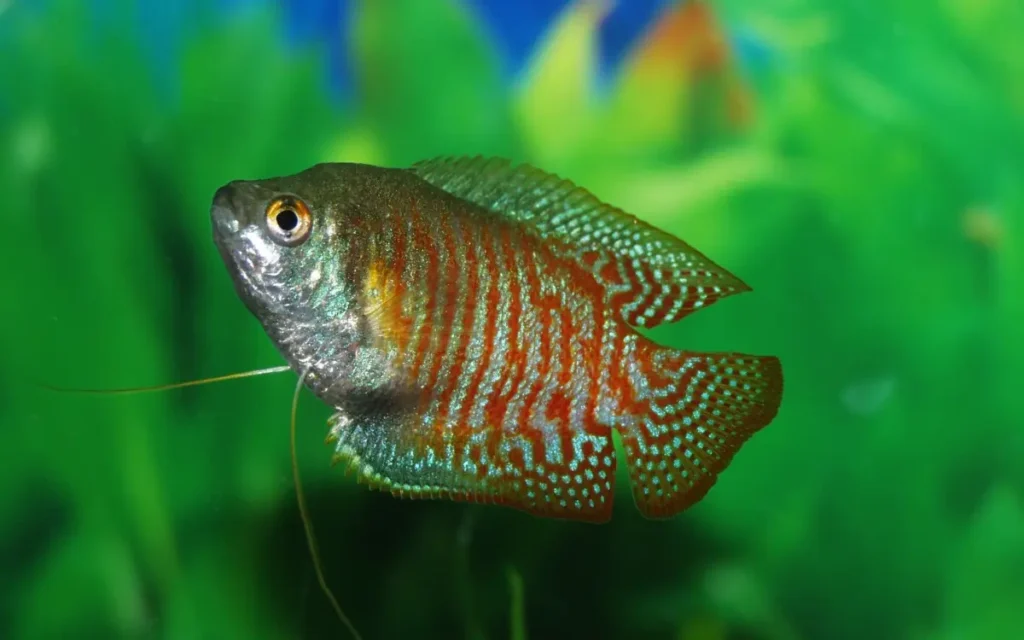
Start with at least 10 gallons, but a 20-gallon tank provides better stability. Use live plants (Anubias, Java Fern, floating plants), driftwood, and caves for natural cover. Keep the surface calm—Gouramis don’t enjoy strong flow. Use a gentle sponge or low-flow filter. Ideal water parameters:
- Temperature: 76–82°F
- pH: 6.0–7.5
- Hardness: 4–10 dGH
Real Tip: Floating plants like water lettuce or frogbit help them feel secure and enhance their natural surface-breathing behavior.
Compatible Tank Mates
Dwarf Gouramis do well with peaceful community fish. Great companions include Neon Tetras, Corydoras, Harlequin Rasboras, Otocinclus, Kuhli Loaches, and peaceful snails or shrimp. Avoid fin-nippers (like Tiger Barbs) and other gouramis unless in a larger tank.
Feeding and Diet
Feed them a varied diet: high-quality flakes, micro pellets, and frozen or live foods like bloodworms and brine shrimp. They are mid-water feeders and can be picky—soaking dry food helps encourage feeding.
Breeding Dwarf Gouramis
Males build bubble nests at the surface. To encourage breeding, raise the temperature to 80°F, reduce water flow, and offer floating plants. Once spawning occurs, the male guards the eggs. Remove the female post-spawning to prevent aggression. Fry hatch in 24–36 hours and require infusoria or powdered fry food initially.
What I’ve Learned: Watching a male construct a bubble nest is one of the most fascinating behaviors in freshwater fishkeeping. Provide floating leaves and quiet conditions, and you’ll likely witness it.
FAQ
Can Dwarf Gouramis live alone?
Yes, especially males. They often do best as solo centerpiece fish.
Do Dwarf Gouramis need a bubbler or air stone?
No, they breathe surface air with their labyrinth organ.
Are they aggressive?
Not usually, but males may be territorial with other gouramis or similar-looking fish.
How do you know if a Dwarf Gourami is healthy?
Bright color, alert behavior, clear fins, and active feeding are all good signs.
Final Thoughts
Dwarf Gouramis are peaceful, intelligent, and vibrant fish that thrive in calm, planted tanks. With the right setup and a bit of patience, they’ll reward you with stunning color and fascinating behaviors.

